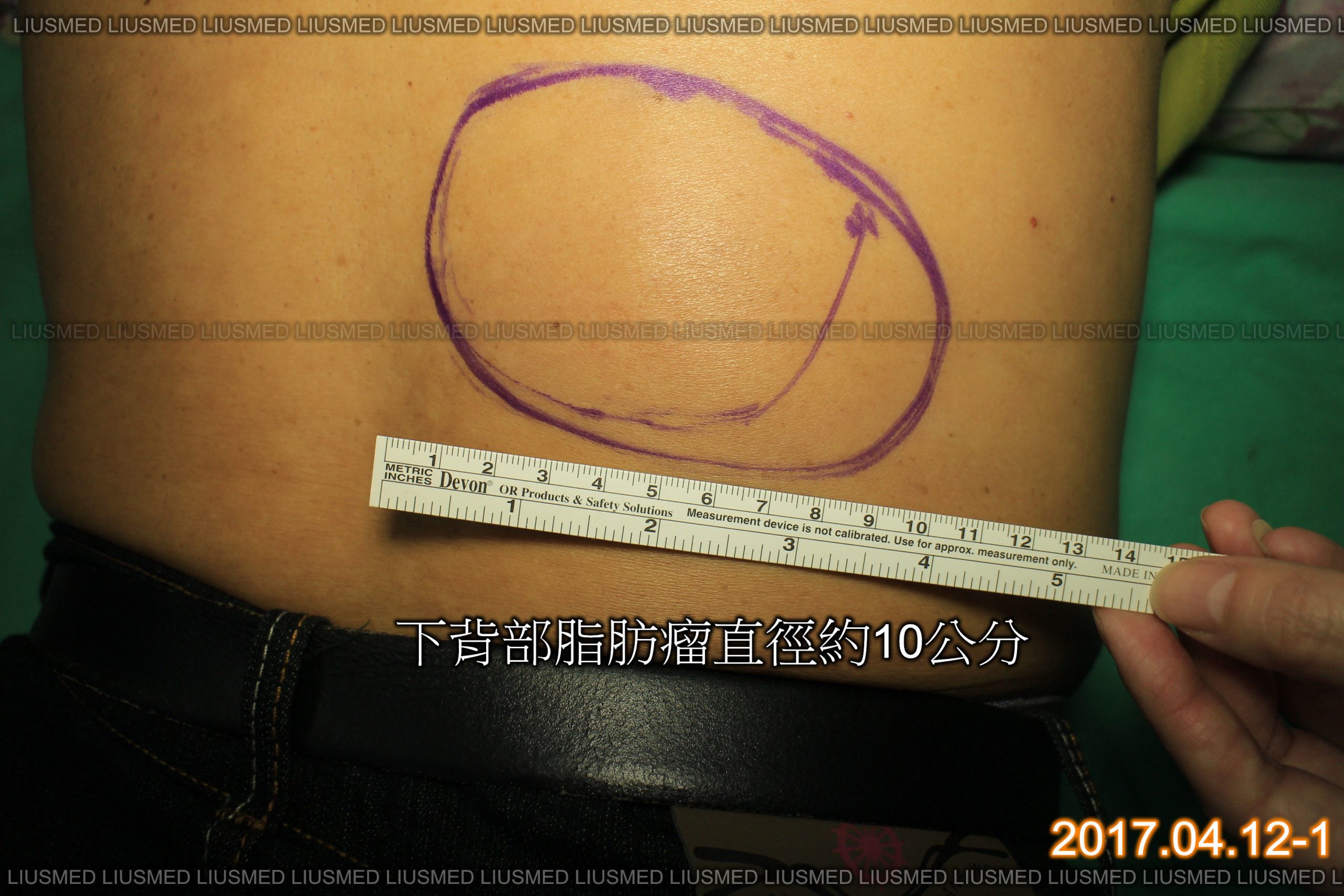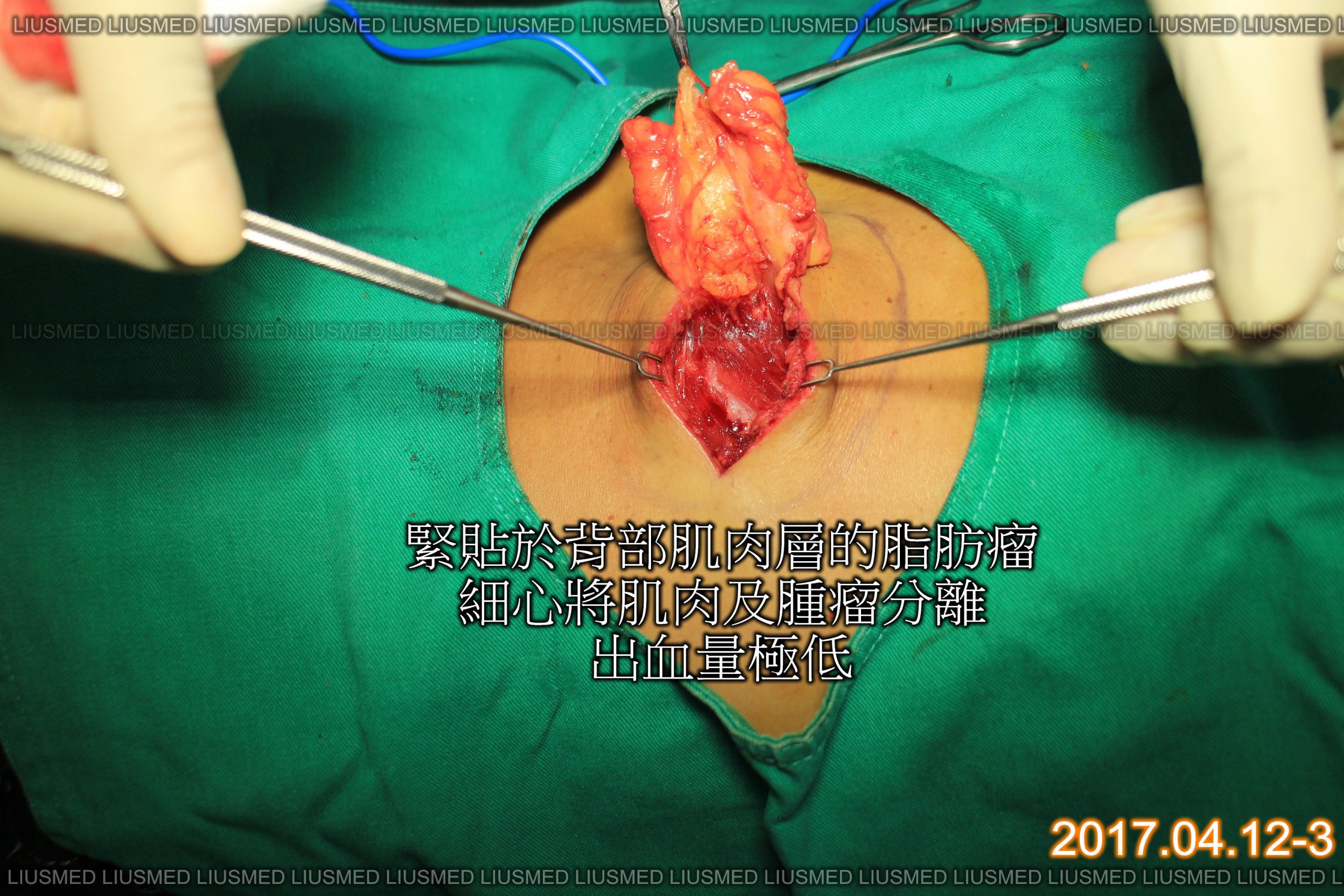Skin surgery is a routine treatment for me every day, and skin tumor excision, lipoma excision, and papilloma excision are treatments that we perform every day. Often, after the surgery, patients share the same feeling: “I didn’t know that the clinic also has this kind of surgery?” “How come it was done so quickly? It’s different from what I imagined…” “It doesn’t really hurt, it made me worry all night and couldn’t sleep…”

Today, I’m sharing a case of back lipoma removal to help everyone understand the process of skin tumor excision in a clinic.

Lipomas can occur in any part of the body where there is adipose tissue, including subcutaneous tissue, muscle tissue, even internal organs, or neural tissue. They are the most common benign soft tissue tumor. The most common site is the subcutaneous tissue of the trunk and limbs, while they are less common in the head and face. They are caused by an increase in adipocytes due to a person’s constitution and tend to be multiple. The tumor itself is soft and movable. Treatment may involve observation and tracking first. If it becomes larger, causes symptoms or functional impairment, surgical excision may be considered. Although most are benign, malignant liposarcoma is possible.


The tumor excision surgery can generally be performed in an outpatient setting. The doctor will carefully disinfect the area around the lesion and establish a suitable sterile field to facilitate the surgery. Under local anesthesia and using an appropriate incision (usually following the direction of skin wrinkles), the lipoma is completely removed and the wound is sutured. The operation usually takes only about half an hour, and the patient can go home immediately after the surgery without affecting their daily work. If the lesion is large, the doctor may decide whether to place a drainage tube to drain the blood and water depending on the situation during the operation, and inform the patient when to return to the clinic to remove the tube or for follow-up. All surgical specimens are sent to the pathology department for detailed pathological examination, and the results of the examination are informed at the follow-up visit.


Process
- Confirm the surgical site
- Confirmation of precautions before, during and after surgery
- Sign the surgical consent form
- Photography of the surgical site
- Surgical site disinfection
- Injection of local anesthetic tumor resection, skin suturing
- Postoperative Wound Dressing
- 1-2 weeks after the operation, return to the clinic to remove the stitches

Postoperative care
- It is normal for the wound to ooze slightly in the first three days after surgery, please do not worry.
- There may be local bleeding at the surgical site, and it usually recovers in about a week.
- There may be a dull pain after the anesthesia fades after the operation, which is generally within the tolerable range. If pain relief is needed and there is no history of drug allergy, you can take the painkiller prescribed by the doctor.
- Wound care method: dip a sterile cotton swab in saline or boiled cold water in the morning and evening, gently scrub the wound, wipe off the dried blood clots and tissue fluid, apply ointment, and then cover with gauze.
- It is recommended not to touch the water, you can stick a waterproof adhesive bandage when taking a bath, and change the dressing after taking a bath.
- Avoid strenuous movements that pull on the surgical site to avoid wound dehiscence.
- You can buy some Steri-Strips, and use them after the stitches are removed after the operation.
- After the operation, if there is discomfort such as redness, swelling, heat and pain at the surgical site, it is recommended to return to the clinic for examination immediately.
After the surgery, it is important to avoid strenuous exercise that may pull on the surgical site to prevent wound dehiscence. If there are any discomforts like redness, swelling, heat and pain, it is recommended to return to the clinic for examination.
Other Cases









Dr. Liu’s reminder: Lipomas are common skin tumors. If surgery is the only treatment, don’t wait until it’s too big to decide to have surgery. My surgical philosophy is to minimize the surgical incision as much as possible and to reduce the pain and tension of surgery as much as possible, hoping that patients with lipomas or other skin tumors can have the best surgical experience. If you have skin tumors, don’t hesitate, come and let me take a look!









